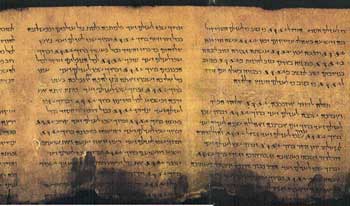By 1215, some of the barons of England banded together and took London by force on June 10, 1215. They and many of the fence-sitting moderates not in overt rebellion forced King John to agree to a document called the "Articles of the Barons," to which his Great Seal was attached in the meadow at Runnymede on June 15, 1215. In return, the barons renewed their oaths of fealty to King John on June 19, 1215. A formal document to record the agreement was created by the royal chancery on July 15: this was the original Magna Carta. An unknown number of copies of it were sent out to officials, such as royal sheriffs and bishops.
The Magna Carta was originally written in Latin. A large part of Magna Carta was copied, nearly word for word, from the Charter of Liberties of Henry I, issued when Henry I ascended to the throne in 1100, which bound the king to certain laws regarding the treatment of church officials and nobles, effectively granting certain civil liberties to the church and the English nobility.

























